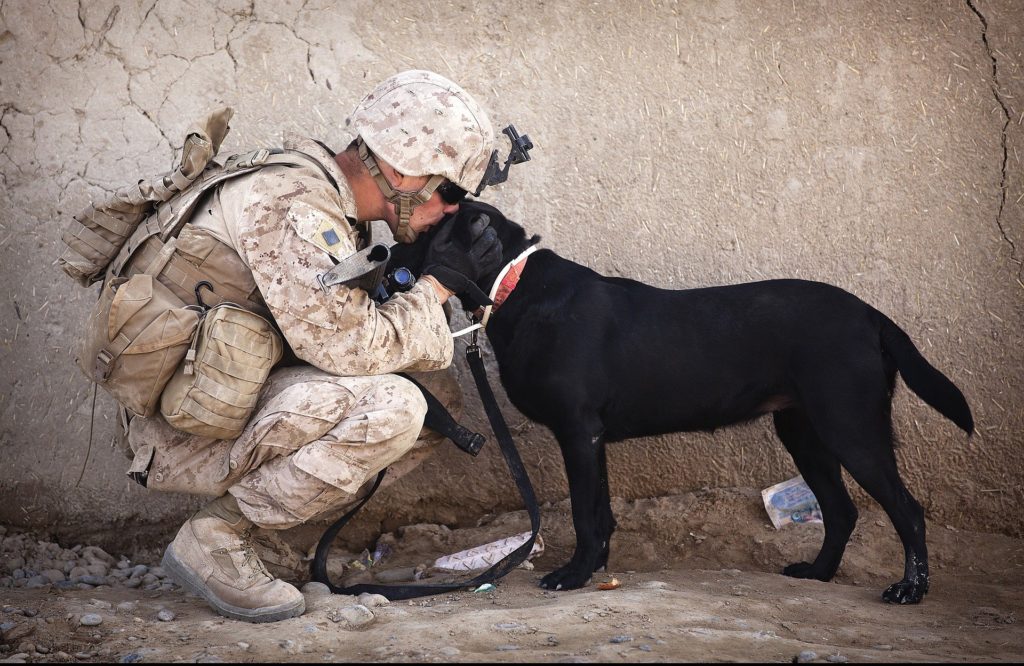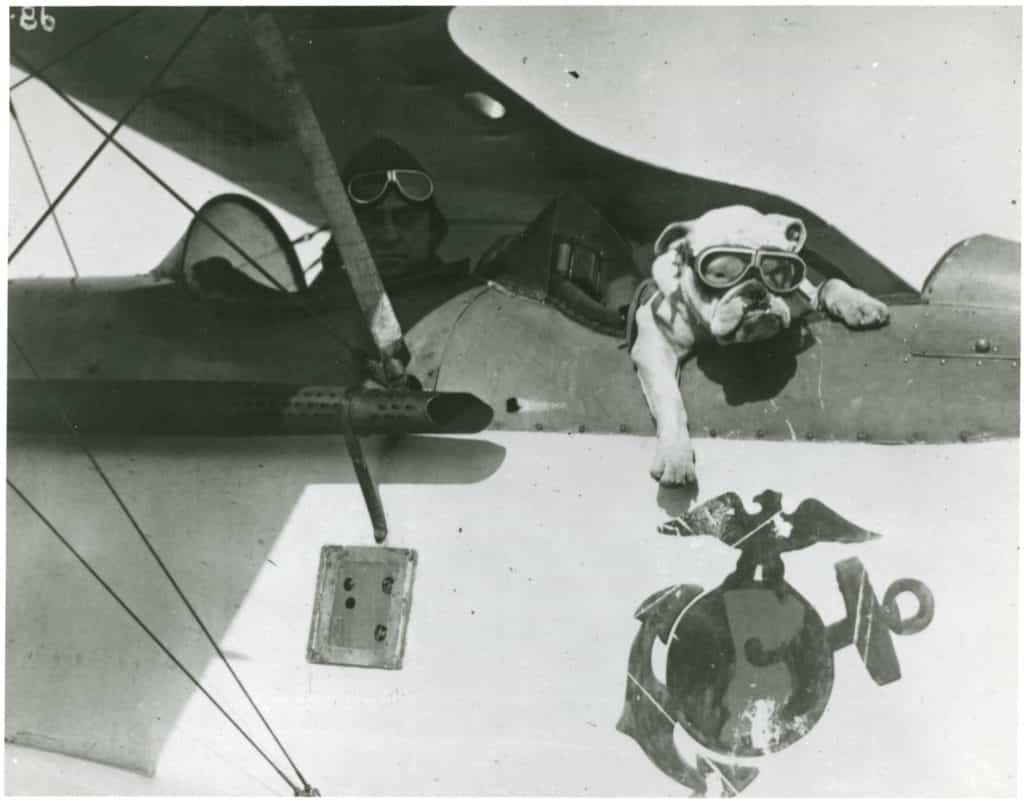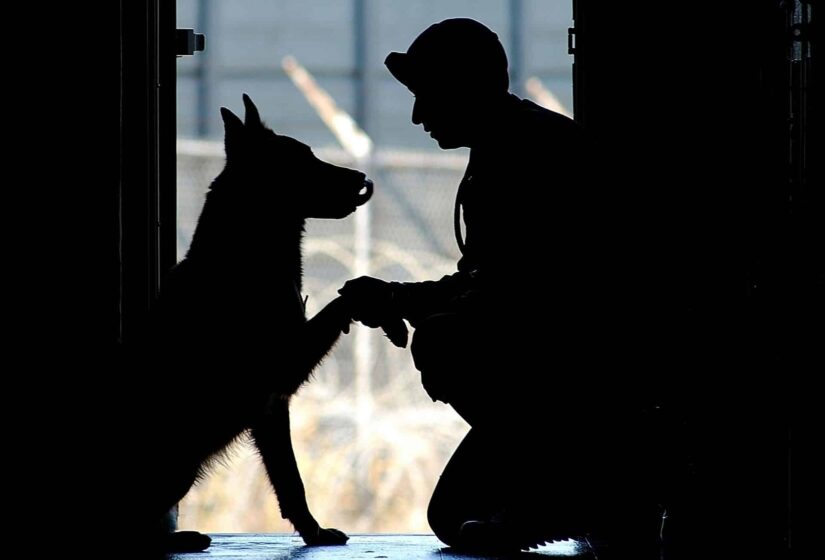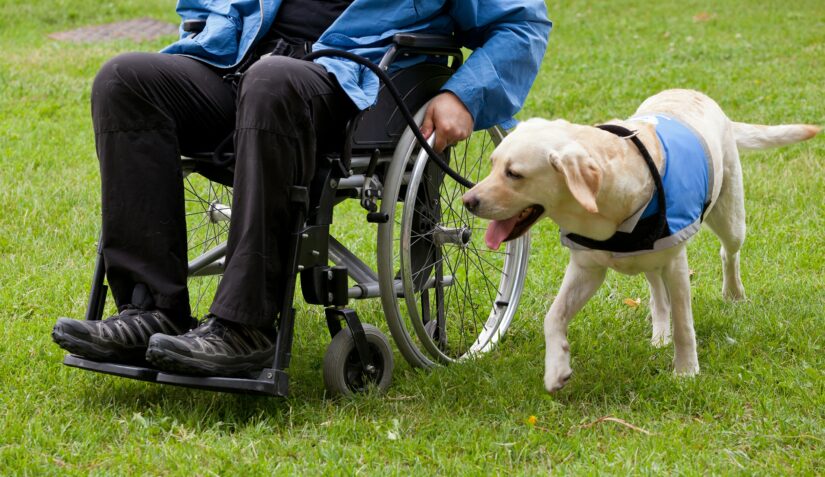These are unprecedented times. Amid concerns over COVID-19 and the country’s preparation to address the medical needs of its residents, ability to flatten the curve, and the short and long term economic ramifications, I’m reminded of a famous quote by Fred “Mister” Rogers: “When I was a boy and I would see scary things in the news, my mother would say to me, ‘look for the helpers. You will always find people who are helping,’” he said to his television viewers. While this is true, there is a population of helpers often overlooked – military service dogs.
What Are Military Dogs & What Do They Do?
They’re trained to perform heroic duties such as explosive detection, patrolling, search and rescue, and subduing a foe. Military working dogs are found in each branch of the armed forces, including the Marines, Army, Air Force, Coast Guard, and Navy. Many times, these dogs can access areas humans cannot; their agility, superior sense of smell, and ability to detect movement are invaluable qualities to their handlers and our nation’s security.

A History of Canines in the Military
Military Dog Breeds – Military dogs, most typically German Shepherds, Dutch Shepherds, and Belgian Malinois breeds, are chosen because they can be aggressive, strong, smart, loyal and athletic, have worked alongside humans for centuries.
First Use of Dogs in the Military – Persian and Assyrian civilizations were among the first to utilize dogs in battle; the United States consistently began training dogs for military work in World War II though Americans documented canine companions in combat as early as the Revolutionary War.
Current Training of Dogs in the Military – Today, a centralized training facility for all military working dogs exists at Lackland Air Force Base in Texas with the 341st Training Battalion, where these dogs begin intense obedience and military training as well as socialization and team building with their handlers.
- 85% of the dogs in training come from Germany or the Netherlands with 15% bred domestically.
- Only about 50% of dogs that enter the program go on to service with approximately 2700 dogs currently in active duty.
- Courses offered are the Specialized Dog Course (for dogs detecting explosives or narcotics), Dog Handler’s Course, Kennel Master Course, and Combat Dog Tracker Course.
- Some dogs are trained for one specific task, such as IED or Mine Detection.
- Retrievers and Pointers can be used for this type of work as they don’t need to exhibit traits of multi-purpose dogs such as aggression and ability to patrol, scout, and protect.
High-Ranking Military Dogs
Experienced Department of Defense’s K-9 personnel are considered Non-commissioned Officers and are always one rank higher than their handler. The highest-ranking military dog is Marine Sergeant-Major Jiggs. (1) An English Bulldog employed as a mascot, he never saw active combat but served in the armed forces from 1922-1927.

K9 Veterans & Their Handlers
Since 2000, a military working dog retired from duty can now be adopted by a civilian or law enforcement personnel though most find a permanent home with their handlers. The handler-dog bond is strong as soldiers put their lives in their canine’s paws every day. No dog is left behind.
Dogs After Duty
Once a dog’s active service has ended, all dogs in combat zones are returned to the United States. Because of their unique skill sets and potential for excitability, trained military dogs are not allowed to “work” once retired from duty. Dogs typically retire around 10-12 years of age, though some are honorably discharged for reasons such as physical injury or mental distress caused by the death of their human partner or development of noise aversions.
Assisting Vets Post Service
The last category of service dogs to aid military personnel are dogs specifically trained to assist soldiers post-service. K9s For Warriors utilizes dogs with gentle, responsive temperaments rescued from shelters across the country to aid those suffering from post-traumatic stress disorder, traumatic brain injury, or victims of sexual assault while in service. Veterans receive their specially trained dog for no charge; it is the least we can do to honor those who put their lives at risk to preserve our freedom.

